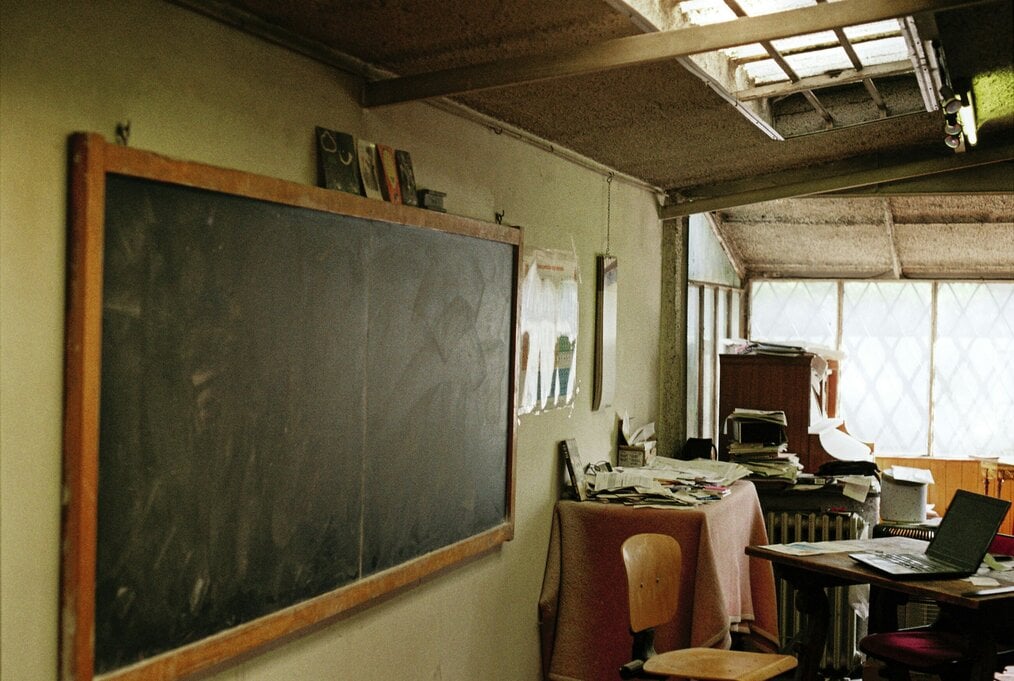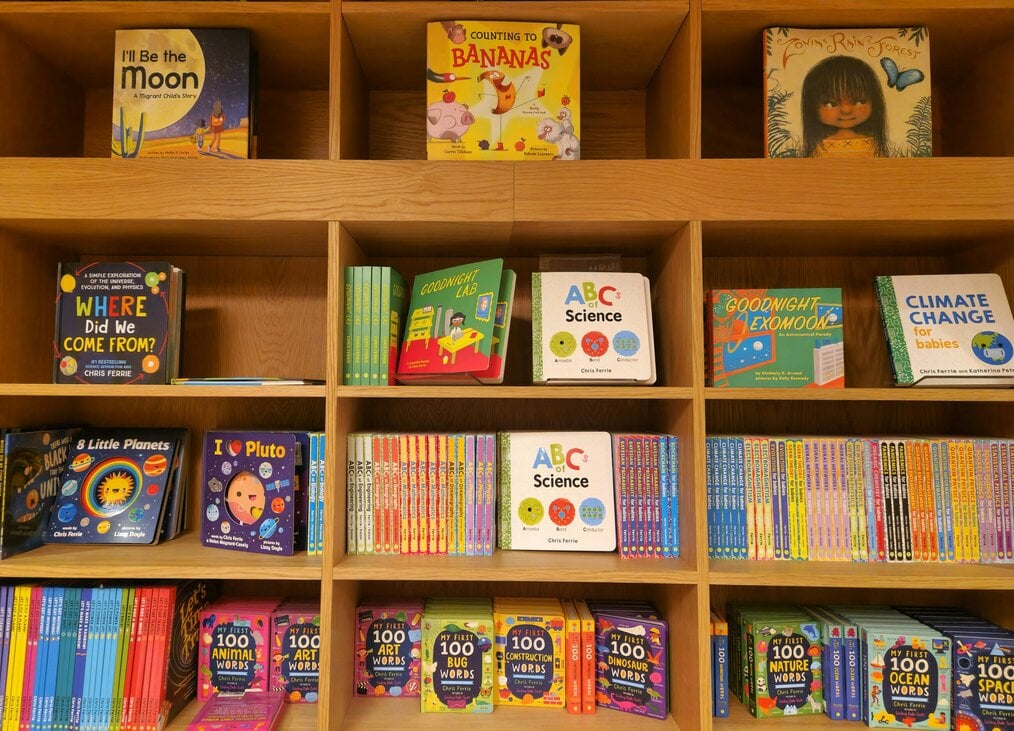
8 Solutions to Teaching With Limited Classroom Resources
While teaching abroad, you may not always have the tools you think you need to succeed. These tips will help you overcome some of the most common challenges faced by teachers in classrooms with limited resources.
In a perfect world, every classroom would have what is needed for students to learn. Unfortunately, this isn’t always the case. Depending on where you teach, you’ll find varying degrees of access to books, materials, and technology. Even in wealthier countries, you may still encounter a lack of basic resources in rural or underfunded urban areas.
While this can present some challenges, there are plenty of simple solutions for a lack of resources in schools. Here are some of the most common issues faced by teachers and our solutions to help you make the most of what you've got.
1. Not enough textbooks for everyone
✅ The solution: Do group activities.
If you have textbooks, but not enough to give one to each student, group activities are a great way to get around this. Make sure that each student in the group has a clear role so that you don't end up with one student doing all the work and the rest of the group just following along.
An example of this could be having students read a text from the book together, where one student narrates, two students act it out, and another writes new vocabulary on the board and defines them for the rest of the class. In this activity, each group can take turns “teaching” the class.
Read more: The 10 Best Games for ESL Teachers
2. You have storybooks, but only one of each
✅ The solution: Create a layered lesson.
If you only have one copy of each book, one solution is to create a different lesson for each book. This is time-consuming when planning but highly effective.
Make a worksheet with vocabulary and reading comprehension questions for each book, then break up students to complete them in groups, pairs, or individually. When they finish, bring the class back together and have each group give a short synopsis of their assignment and share what they learned with the class. You get students practicing reading, writing, speaking, and listening, and spending most of the lesson actively engaged.
Read more: Tips for Creating ESL Lesson Plans
3. No textbooks at all

✅ The solution: Treat your chalkboard like a textbook in the making.
If you have no textbooks at all, you'd better learn some chalkboard management skills - and fast! Everything you are writing on the board will go into your students' notebooks and in turn become their textbook. Make sure you clearly label items and write anything that might be helpful for them to study at home on the board.
For organizational purposes, it’s helpful to use different colors to signify vocabulary and grammar and format each lesson exactly the same. This makes things easier for both you and the students! It gives you a template to structure each lesson and it allows students to easily look up a grammar point or re-read a dialogue later on.
Read more: How to Create the Perfect ESL Lesson Plan
4. No way to photocopy worksheets
✅ The solution: Use flip-chart paper to make a communal worksheet.
Teachers get very attached to passing out photocopied worksheets. But if you don't have access to photocopiers (or you have to pay and can't afford it), consider writing your worksheet on a large piece of flip-chart paper and sticking it on the chalkboard for the whole class to see.
This way, you have the option of making the class copy the exercises into their notebooks or having students come up to write the correct answers to complete the exercise as a class. Keep in mind that if you want them to copy the whole worksheet, you'll have to give them a few minutes to do so.
Read more: 10 Essential ESL Teaching Tools
5. No equipment to show educational films
✅ The solution: Plan a movie night with your laptop.
Movies and series are a great way to practice listening and to learn some cultural points. If you don’t have a projector in the classroom, consider creating a movie night for interested students and show them films on your laptop. If you have a large class and a lot of students want to participate, you can screen the film over several nights for smaller groups.
If you want to use your laptop for more than just movies, it might be a good idea to invest in a projector if you have the means. There are some affordable portable projectors (around $50 USD) that you could consider buying before you leave. If the classroom doesn’t have a screen, all you need is a blank wall!
Read more: How to Improve Your Classroom Management: A Beginner's Guide
6. No CDs with practice dialogues

✅ The solution: Read or record one yourself.
If you don't have access to pre-recorded dialogues or listening exercises, consider making them yourself. One option would be to simply read and act one out yourself, changing your place and voice slightly to signal a speaker change (which I'm sure your students will be amused by).
The other option would be using your laptop or phone to record you and another person speaking before class. Make sure that if you choose to record your own practice dialogues, you have a way to play them out loud – classrooms may not have CD players, speakers, or even computers for your use.
7. No resources for teachers
✅ The solution: Download books to your computer/tablet before you go.
If you will be teaching with limited resources, you will likely know before you get there. Prepare yourself for those moments when you find yourself thinking "what the heck is the difference between present perfect and past perfect?" by downloading an English grammar book for teachers before you go.
Getting a TEFL certificate is another great way to make sure you know your stuff! If you don’t already have one, you can do an online TEFL program before you go so you aren’t re-learning old grammar explanations on the fly.
Read more: Tips for Teaching Advanced ESL Students
8. No classroom
✅ The solution: Buy a whiteboard so you can teach wherever you go.
If you find yourself teaching somewhere without access to a classroom, don’t worry! Simply invest in a whiteboard and markers so you can set up a portable classroom wherever you go. This is why it’s important to ensure you have all the details about your future job beforehand: you can buy what you need at home.
However, if this lack of a classroom is a surprise to you upon arrival, all hope is not lost. You should be able to find whiteboards and markers in the closest major city and bring it back to wherever you are teaching.
Invest in buying a few different colored markers - and voila! - you've got a better resource than even a chalkboard. You'd be surprised what you can accomplish with just a whiteboard, some markers, and a well-planned lesson.
Read more: The Beginner’s Guide to Teaching English Abroad: 12 Crucial Tips & Pointers
Low-cost items to bring with you

If you know in advance that you’ll be teaching with insufficient learning materials, here are some small, low-cost things you can buy before you leave. They won’t take up much space in your suitcase and they’ll definitely pay for themselves!
- Mini whiteboard, markers, and eraser: Even if you have a whiteboard, having a small portable one is helpful for small groups and can also be used creatively in games.
- Pre-printed flashcards: Premade flashcards are very versatile. Not only are they good for practicing vocabulary but they can be used in all kinds of games.
- Index cards to make your own flashcards: Make your own flashcards as-needed with blank index cards. Even better, laminate them before you go! You can have the kids make their own flashcards that can then be erased and reused.
- Paperback picture books: Small paperback picture books are lightweight and can be used in several different ways. Have a classic story time or, if your students are older, put them in small groups to read and summarize or act out their storybook for the class.
- Card games (Apples to Apples, Uno, Go Fish): Card games never get old! They can be played as intended or set your own rules to fit the lesson.
- Deck of playing cards: Any card game can be made into an English game. When I worked with highschoolers in Spain, I adapted the classic college drinking game Kings into an English language game (without the alcohol, of course!).
- Blu-Tack or other reusable adhesive: Reusable adhesive is great to stick flashcards or loose paper to the board for games or instruction.
Don't panic, get creative!
If you find out that your future teaching job lacks basic classroom resources, don't panic! The best way to overcome a lack of resources in schools is to get creative.
Most likely, your students have already gotten used to learning with only the most basic learning tools (a notebook and a pen) so there's no reason why you can't also adapt and be a fantastic teacher with nothing more than a chalkboard and that noggin of yours.






